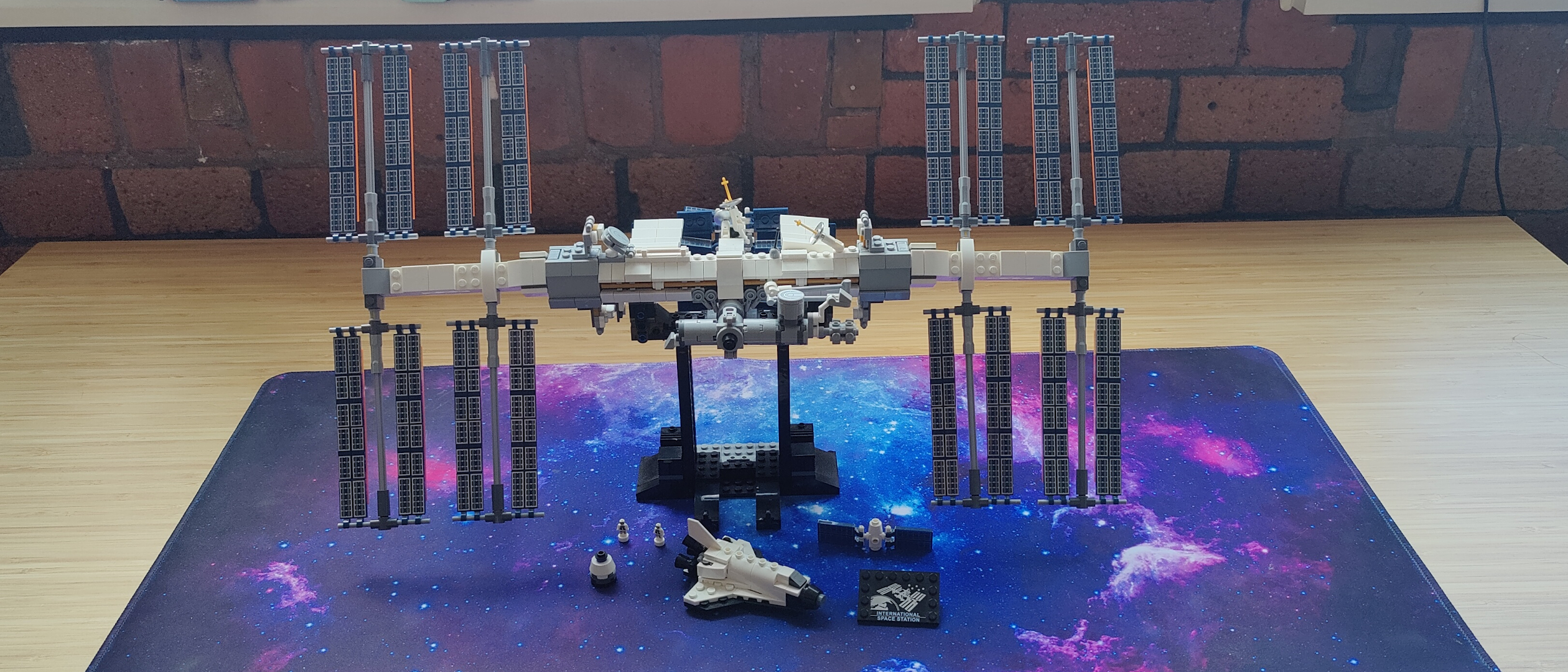Space Verdict
An excellent display piece that space fans should love, but pure Lego fans might find the build to be a little bit lacking, as is the set’s stability on the brick-built stand. The finished model has great presence, but its size and shape also makes it a little unwieldy to display.
Pros
- +
Great shelf-presence
- +
Good price
- +
Excellent mini-shuttle
- +
No stickers
Cons
- -
Doesn’t stay on the stand well, prone to coming apart
- -
No explanation of the various ships/parts of the station
- -
Un-involving and at times repetitive build
Why you can trust Space.com
We can imagine that 21321 International Space Station (ISS) might be a divisive set among Lego collectors (we’re emphasizing ‘collector’ because this is one of those sets that’s definitely not a toy).
Price: $69.99/£59.99
Model number: 21321
Pieces: 864
Finished dimensions: 51cm x 20cm x 31cm
Recommended age: 16+
For the spaceflight fans, the finished model is an excellent representation of the ISS. It’s got great stature, with the 51cm-long central truss, and the huge solar arrays adding depth, nicely finished off with a UCS-style plaque. On the other hand, Lego fans looking for an interesting and stable build might be disappointed.
The International Space Station is part of the Lego Ideas line, based on a design by Lego fan Christoph Ruge. It’s nicely presented in its box, which has a lift-up lid rather than having to break open a seal at the side. We tend to find that the boxes with lids and a tray are better for putting all the pieces in while building to avoid accidentally knocking any onto the floor. Inside are 6 bags of bricks, plus a chunky 128-page manual.
In reality, it took more than 40 space flights, including 36 shuttle flights, over about a dozen years for astronauts to build the ISS. Now, you can build it in a couple of hours, and unlike the real one, you won’t have to de-orbit it in 2030!
The Lego ISS kit will be discontinued at the end of 2022. You'll still be able to find it at third-party retailers for a while after it's officially gone, but if you're keen to pick it up, sooner is better than later.
Lego International Space Station: Build
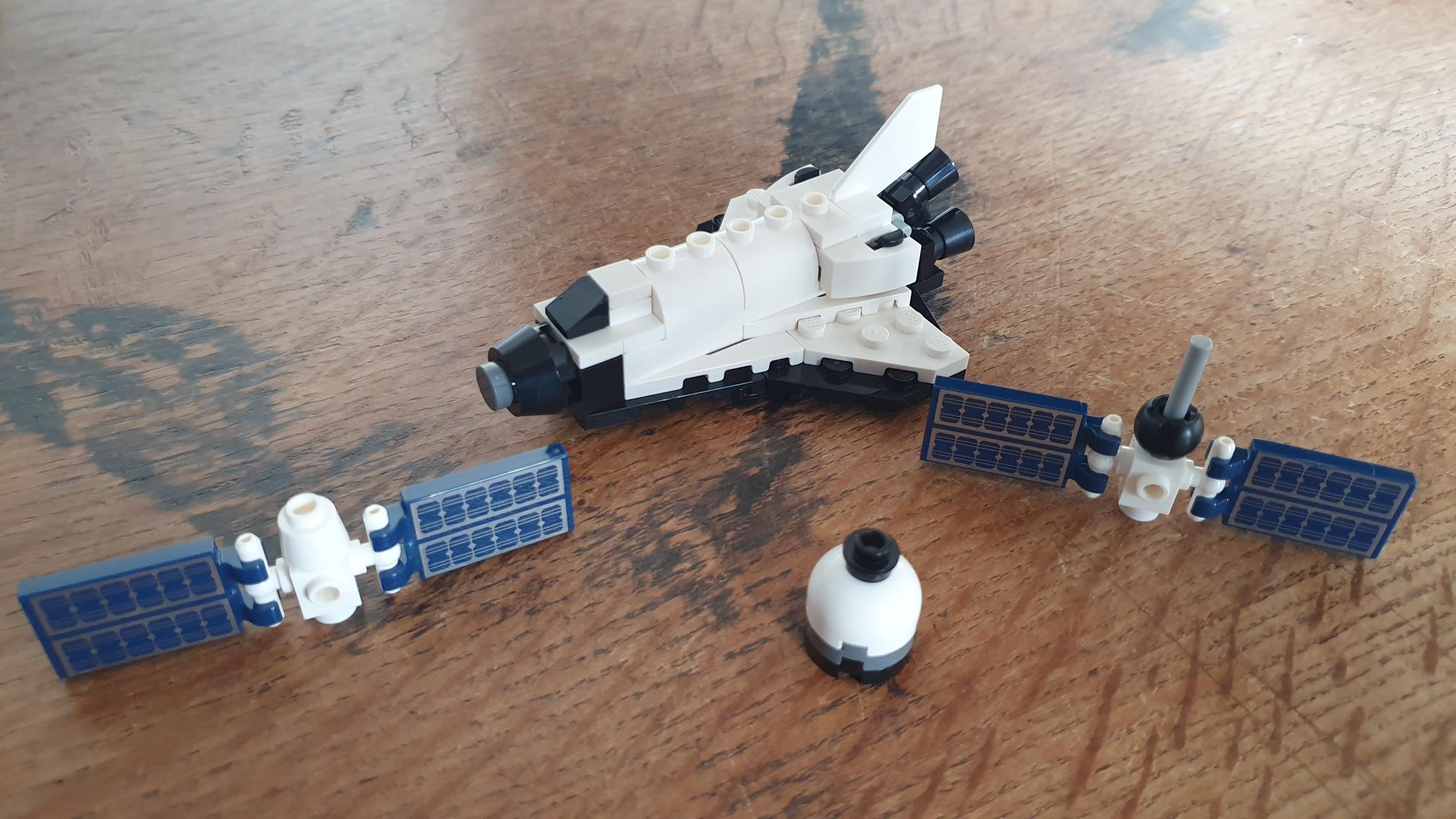
Bag 1 contains several mini-builds, including a fantastic snub-nosed space shuttle to give you something to swoosh around, and a handful of small, simple capsules.
Bag 2 is the stand, which uses a large black 6x16 plate as a base, and featured four stanchions niftily held in place by Technic pins, on top of which sits a cradle to hold the space station.
By this stage, we were becoming eager to actually begin construction of the ISS itself. Bag 3 contains most of the elements for the station’s central truss. Honestly, we didn’t find it to be the most engaging build – it’s basically a long white and dark grey rectangle, with no particularly interesting parts.
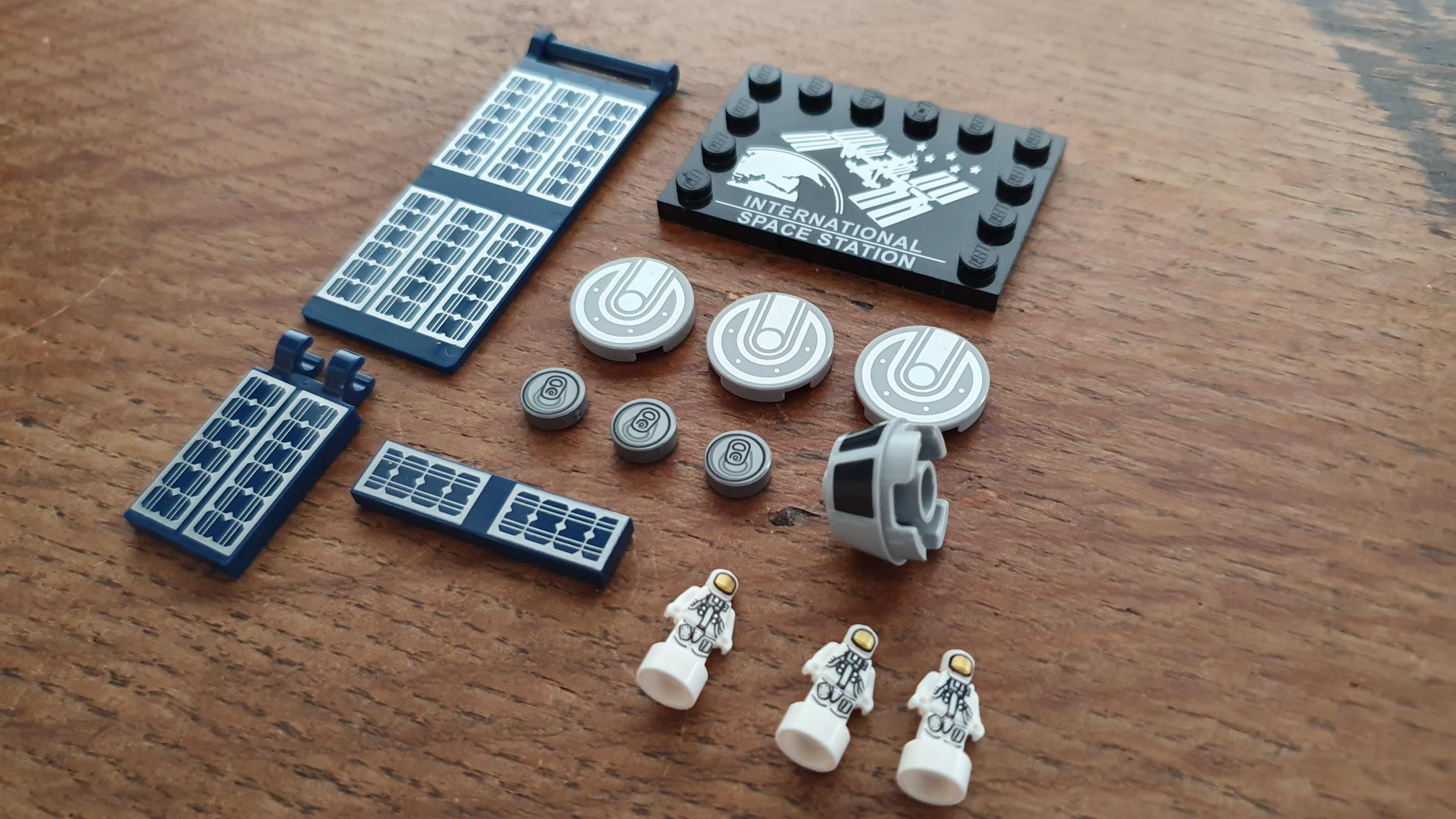
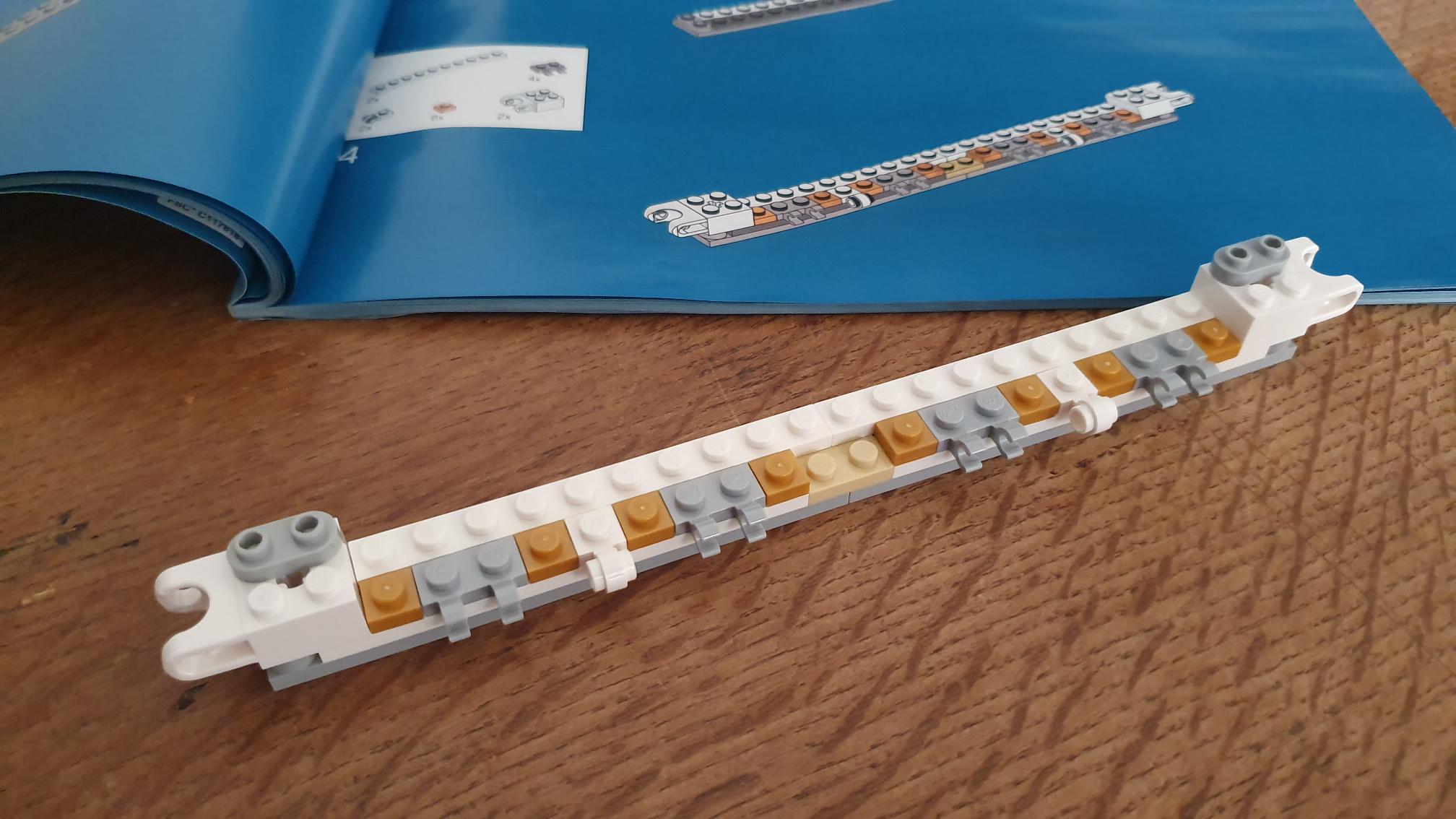
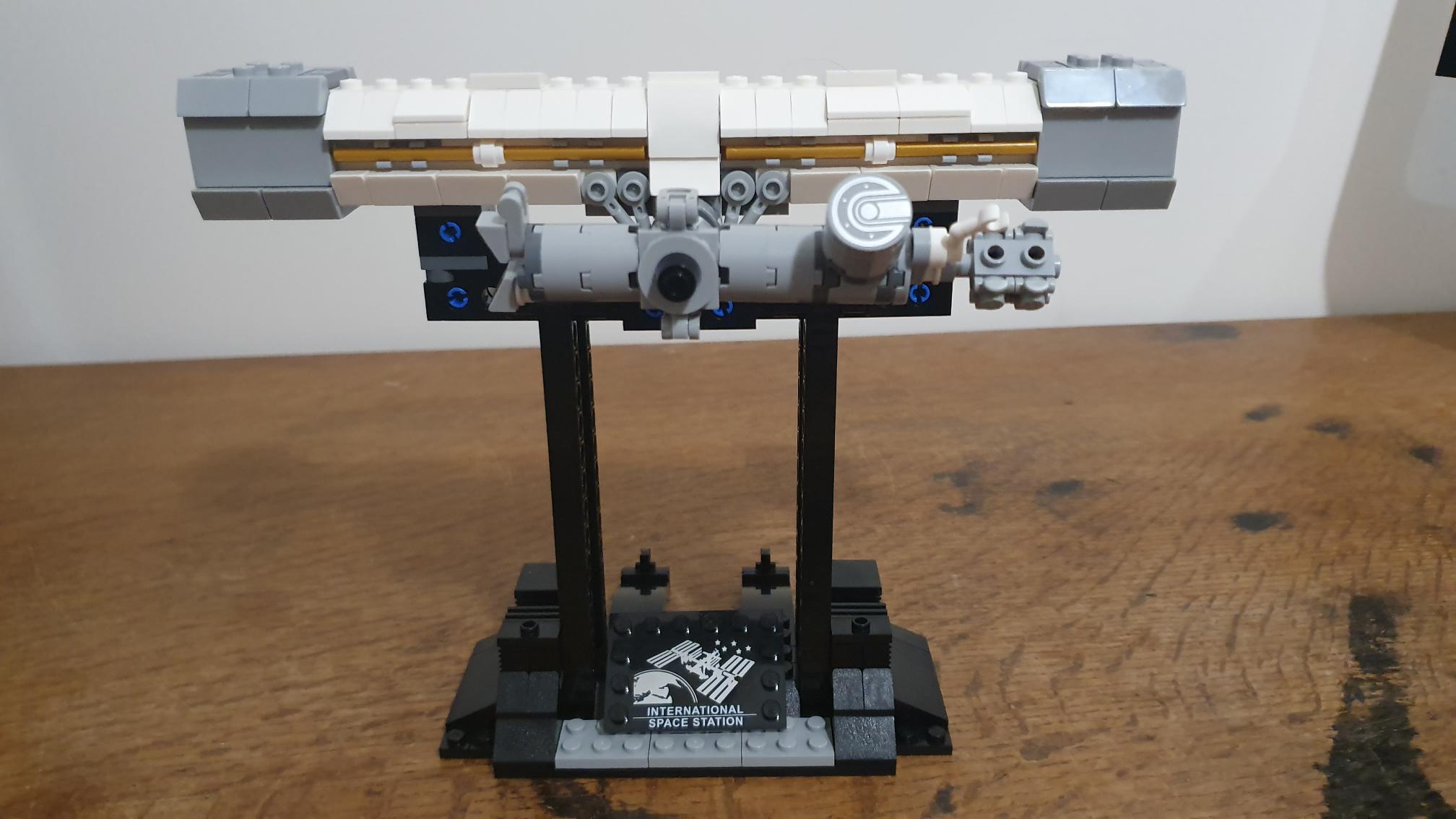
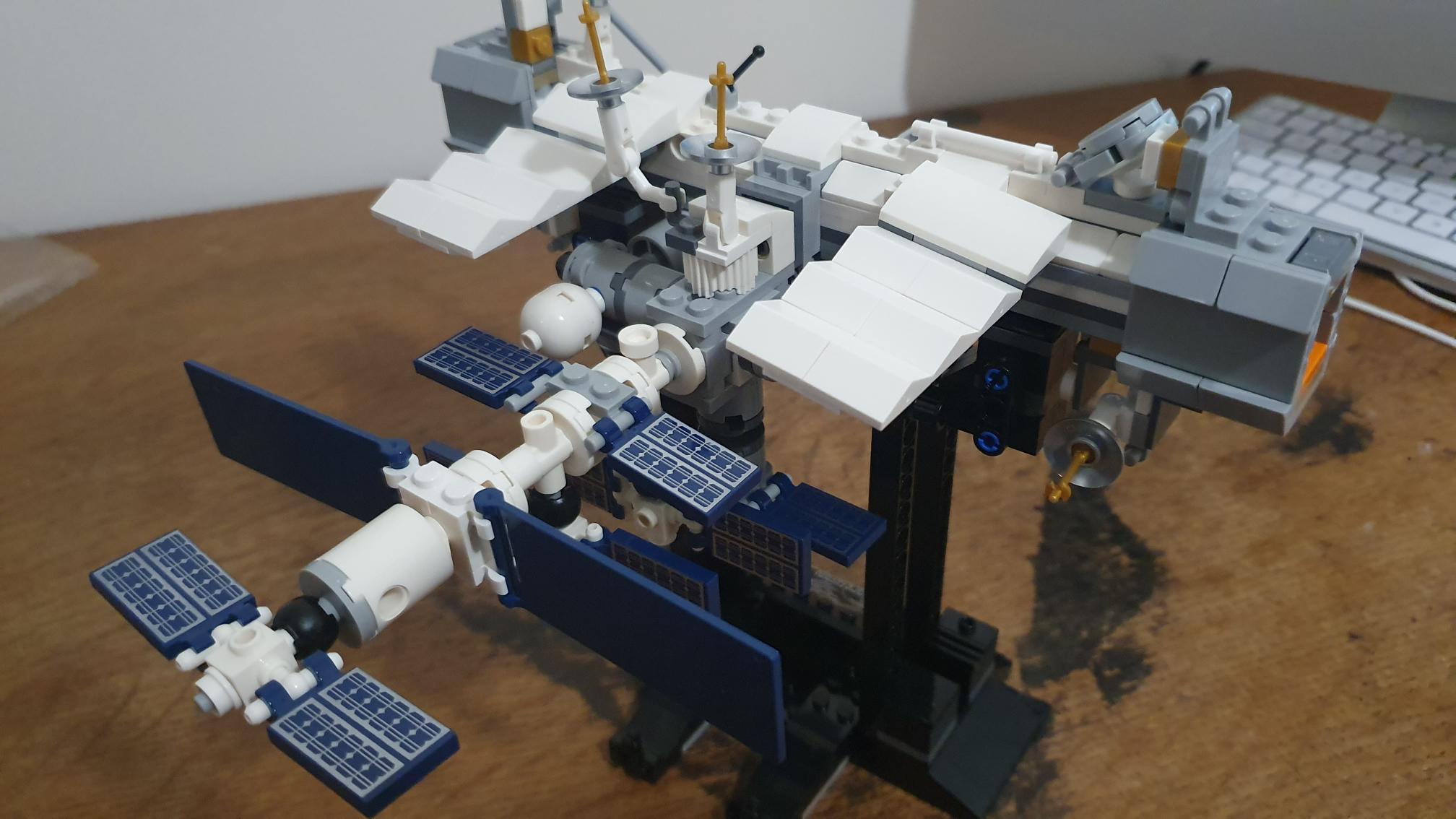
Things became more interesting with the attachment of the various modules, which are essentially built by skewering them with a Technic rod. The instructions suggest that this stage is best attempted when the truss is attached to the stand, although the station only lightly clasps to the stand by two studs on either side, leaving it prone to easily being dislodged. Adding the modules does leave the model back heavy, which further adds to the risk of it toppling off the stand.
Printed pieces are one of the highlights of the set. There are docking latches printed on circular 2x2 tiles, and tiny airlocks printed on 1x1 circular tiles. There are also the many printed solar arrays on dark blue tiles, some of which affix to the station’s solar panels, others clip onto the various capsule mini-builds. There’s also some neat gold antennas and silver-chromed dishes that will be of interest to the dedicated Lego builder looking for interesting pieces.
Completing the build are the eight solar panel arrays, which are simple but repetitive builds. However, we found that once these are added they increase the size of the model dramatically, and they are held in place securely by Technic pins that allow them to tilt to face in the direction of the Sun.
Lego International Space Station: Design
Lego’s ISS model looks great. It’s got a sense of scale – if we step back and squint at it, we can almost imagine that it’s the real thing. And despite the rickety nature of parts of the build, we did feel a sense of accomplishment as we added the modules one by one, such as the Columbus lab module, and Kibo, the Japanese module.
The ISS’ two robotic arms, Canadarm2 and the Japanese Experiment module Remote Manipulator System are also represented as movable features that can grab one of the mini capsules. There’s even a neat cone-piece with printed windows to represent the viewing cupola.
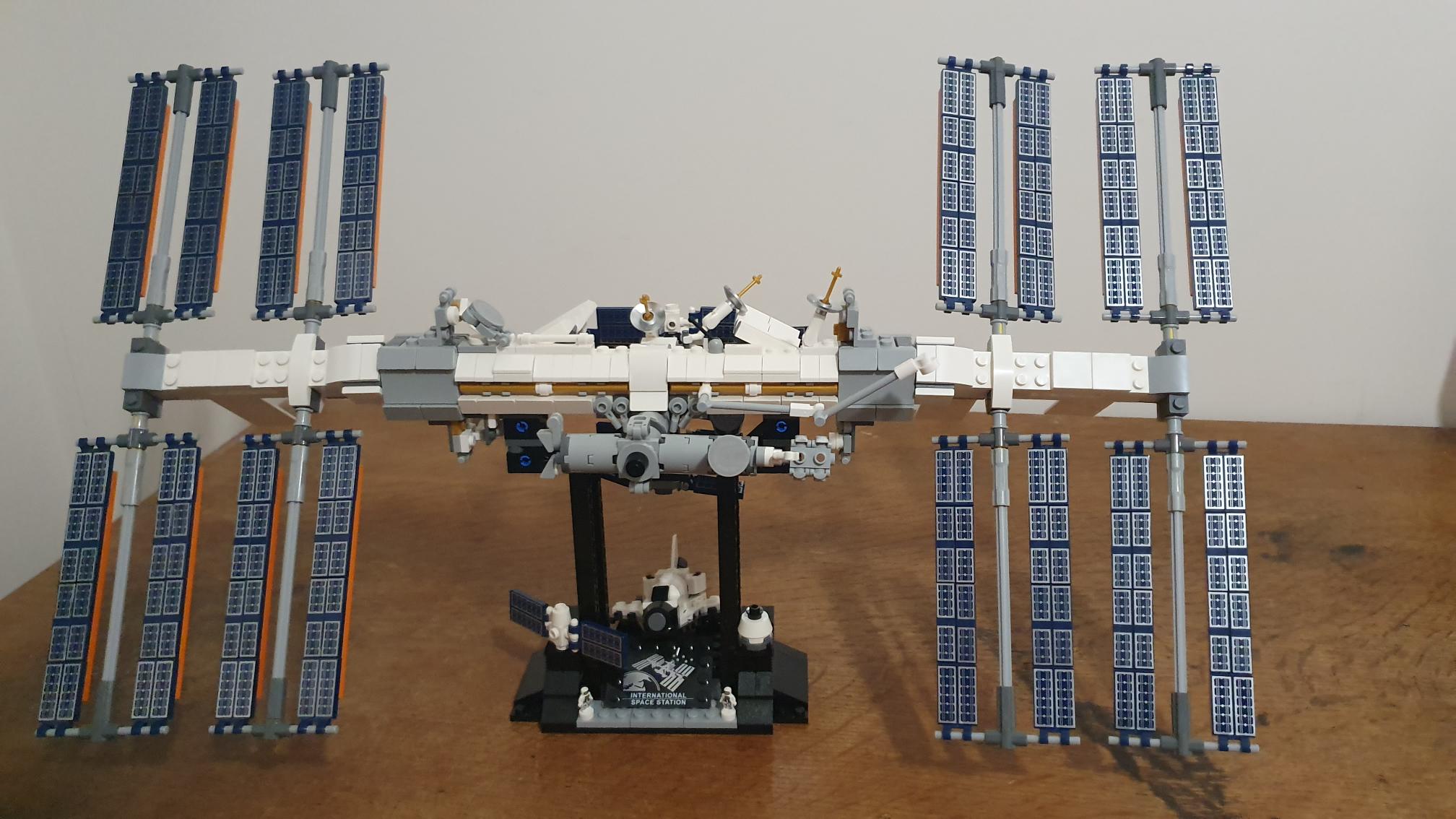
One complaint we did have is that there’s very little ancillary material. The chunky manual does a great job of providing clear instructions well (although we did spot one error, on page 52, in the placement of some ‘cheese-slope’ pieces), and it also has a little background information about the ISS, a little more detail wouldn’t have gone amiss. Take the small capsule builds. As spaceflight fans, we know roughly what the capsules are meant to represent – probably a SpaceX Dragon capsule, and a couple of Soyuz capsules.
For the uninitiated, however, these builds will be mysterious, and nowhere in the manual does it explain what they are. This lack of information also extends to the various parts of the station. It would have been nice, for example, had the different modules been named in the manual – we had to resort to looking it up online.
Still, even though the various modules remain nameless, there is lots of detail in the model, with antennas, communication dishes, airlocks, robot arms, heat exchangers and various scientific experiments setup on the space station’s hull. So although you can’t really play with the model, visually there is lots to inspect on it.
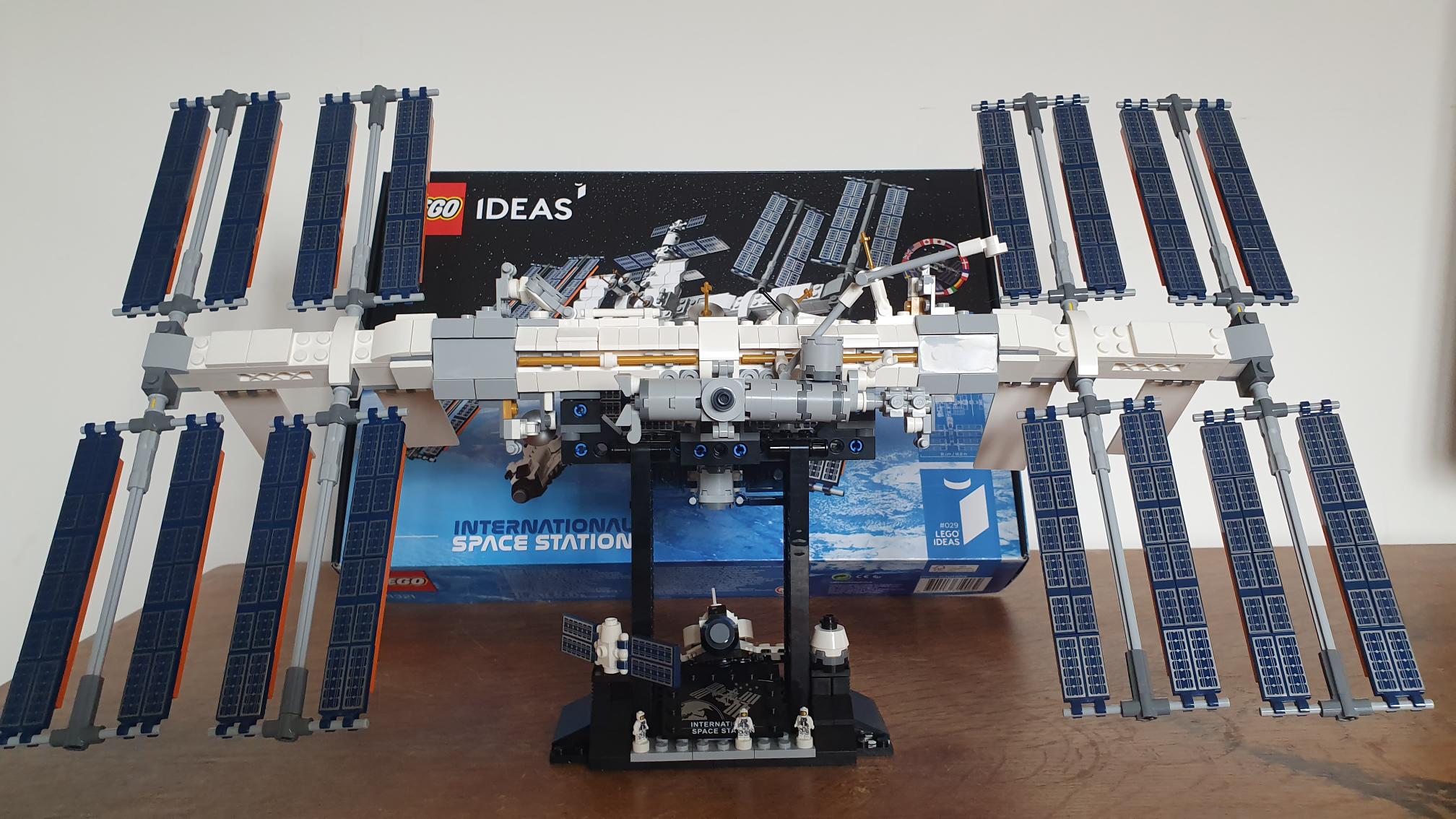
Should You Buy the Lego International Space Station?
Overall, we found that the finished 21321 International Space Station looks highly impressive and is a great and surprisingly accurate representation of the ISS. For the price, it really is a large model, so we felt like we got our money’s worth, although it’s so large and unwieldy that finding a safe place to display it can be tricky! We’d definitely recommend it to any space fan with an interest in Lego.
Other Lego space sets to consider
The ISS is a great companion piece to Lego’s other space sets, such as Lego NASA Space Shuttle Discovery, which is a large, well-designed but expensive ($199.99/£159.99) set.
Alternatively, Lego NASA Apollo 11 Lunar Lander, is a comparative bargain at $99.99/£89.99 and includes Neil Armstrong and Buzz Aldrin mini-figures!
For younger (and young-at-heart!) space fans, there’s also the Lego City range of space sets inspired by the Artemis missions, with a Rocket Launch Center ($159.99/£124.99), a Lunar Research Base ($129.99/£89.99), a Lunar Space Station ($79.99/£54.99) and a Lunar Roving Vehicle ($39.99/£24.99).
Join our Space Forums to keep talking space on the latest missions, night sky and more! And if you have a news tip, correction or comment, let us know at: community@space.com.

Keith Cooper is a freelance science journalist and editor in the United Kingdom, and has a degree in physics and astrophysics from the University of Manchester. He's the author of "The Contact Paradox: Challenging Our Assumptions in the Search for Extraterrestrial Intelligence" (Bloomsbury Sigma, 2020) and has written articles on astronomy, space, physics and astrobiology for a multitude of magazines and websites.
